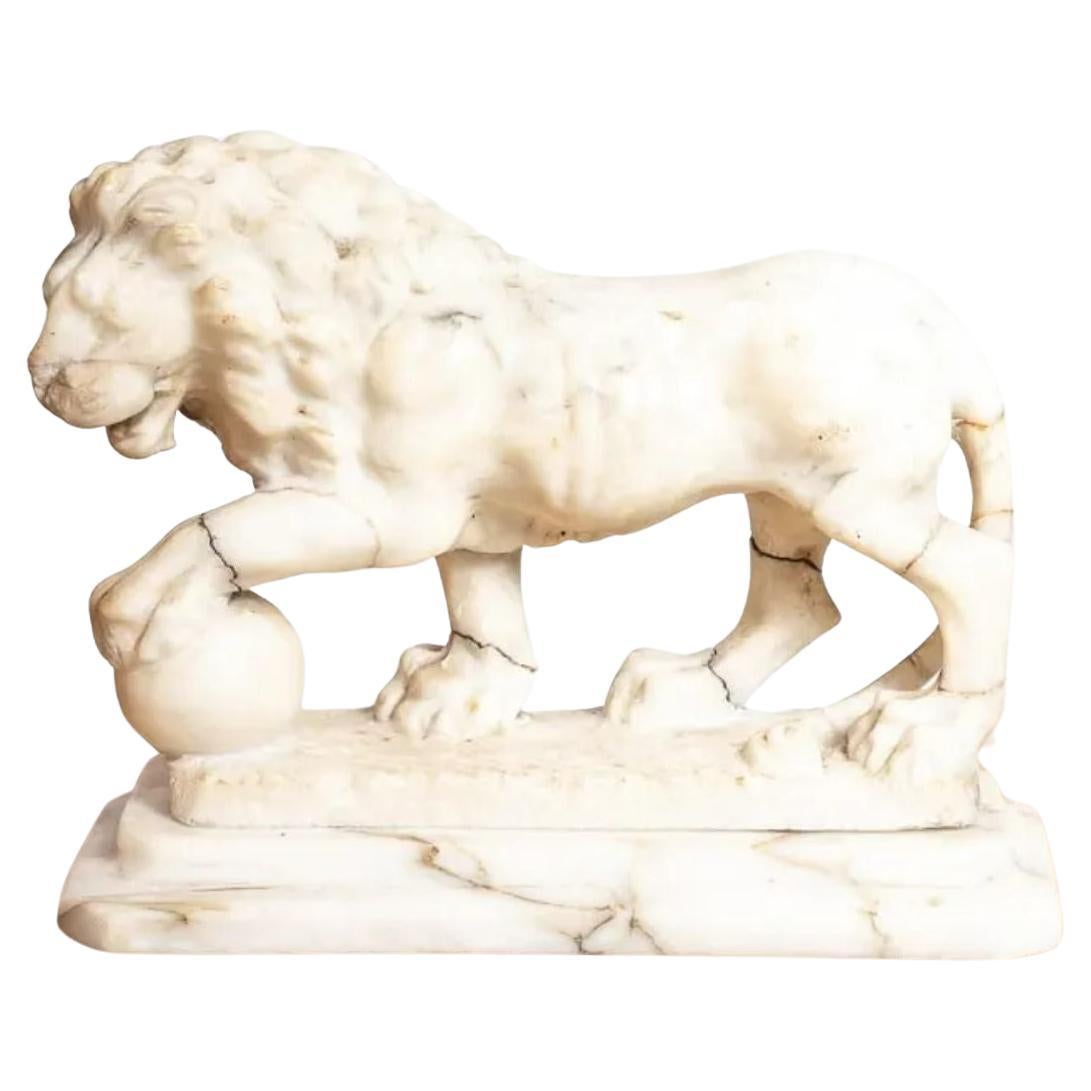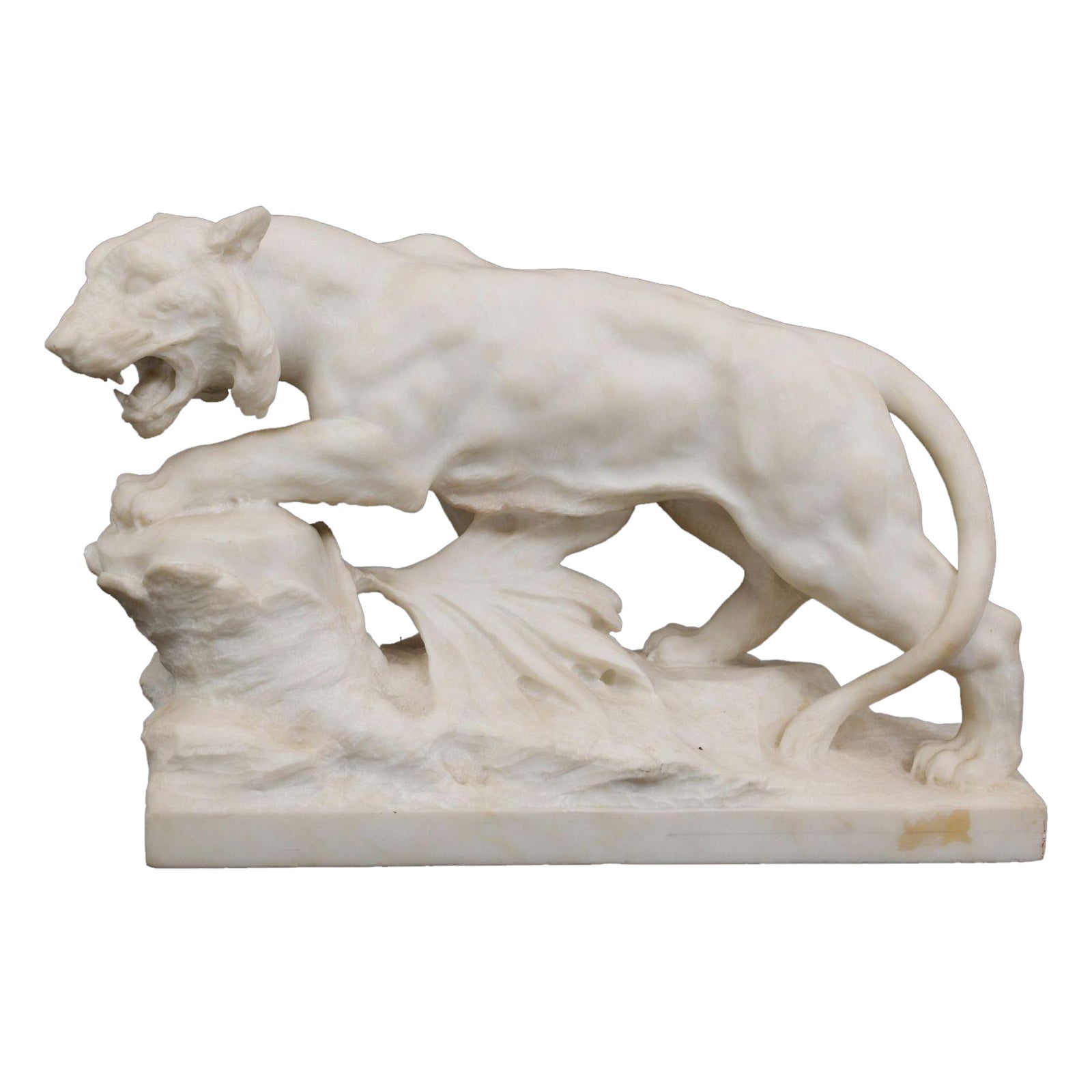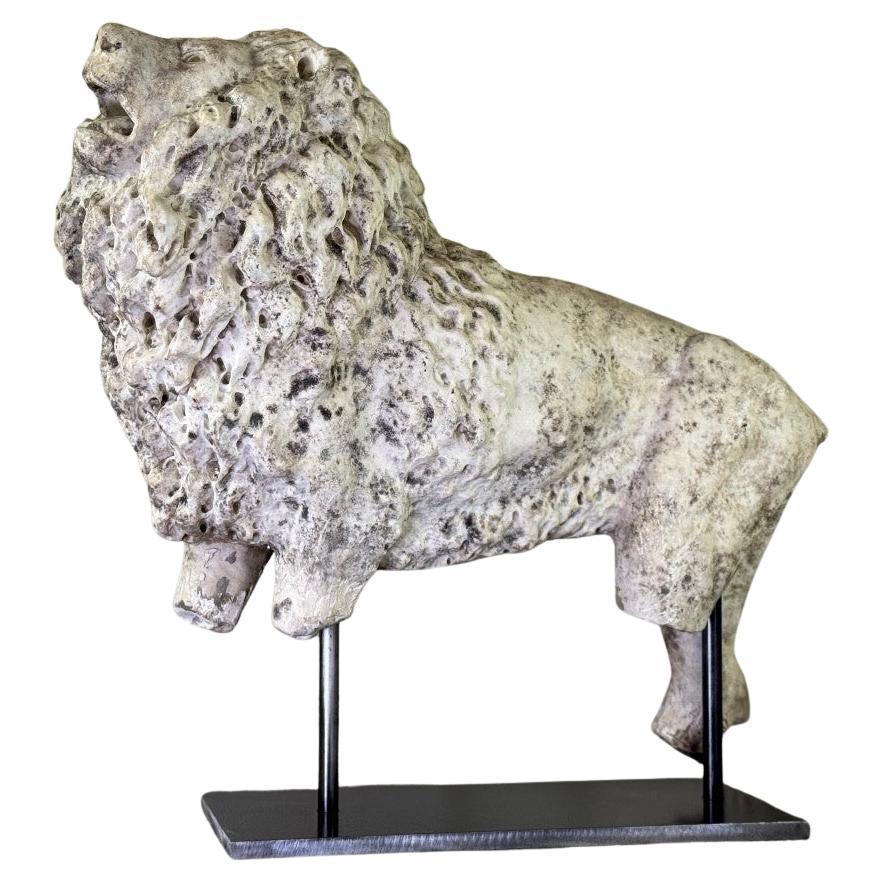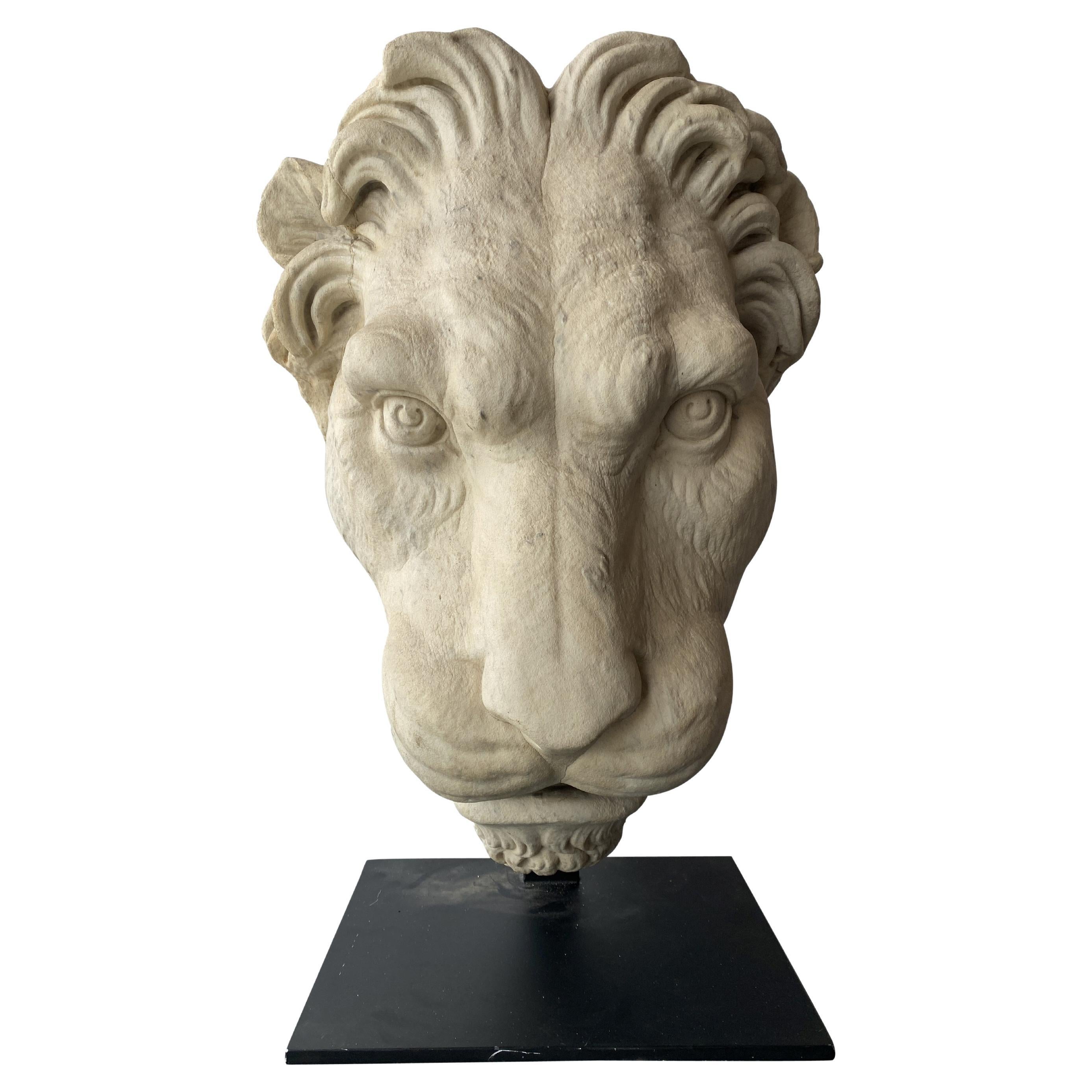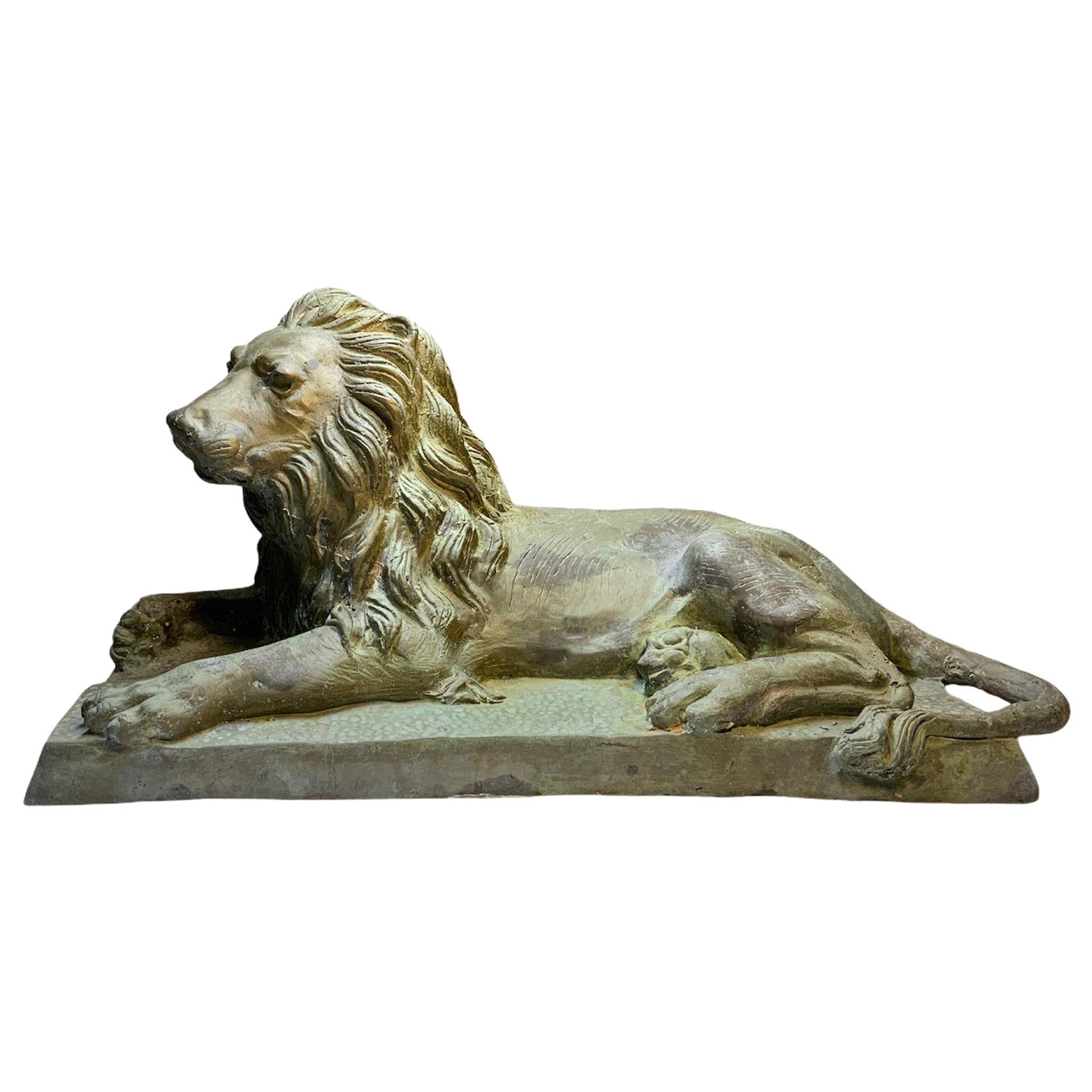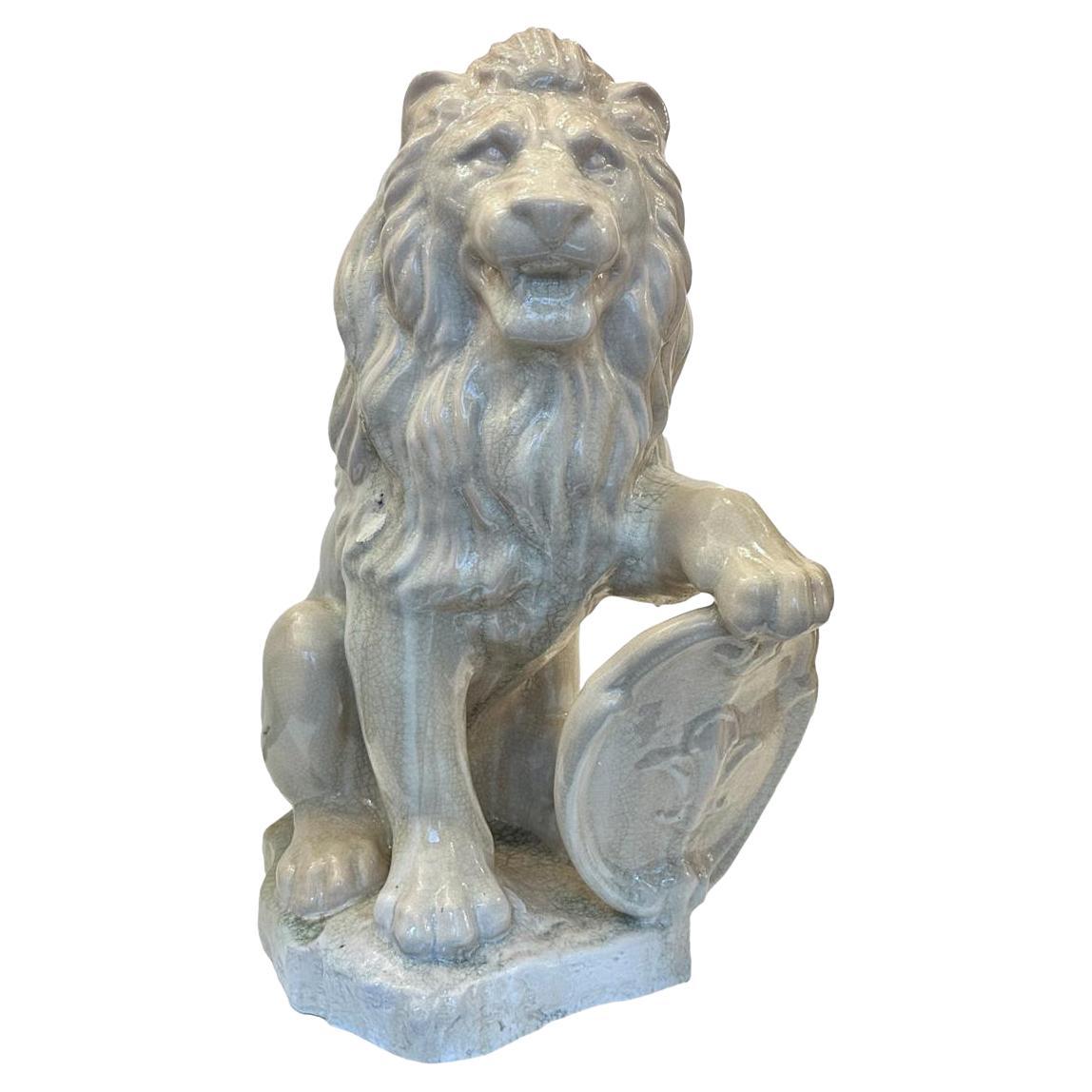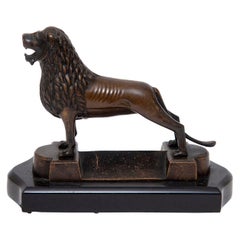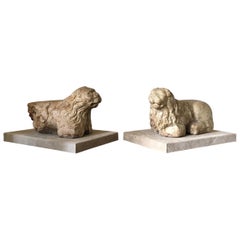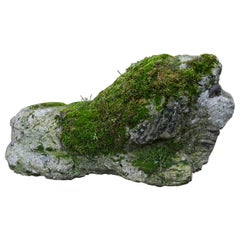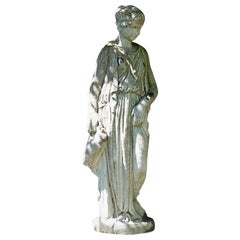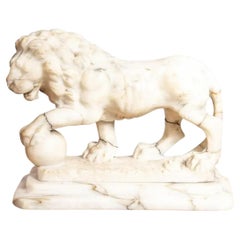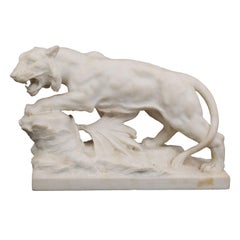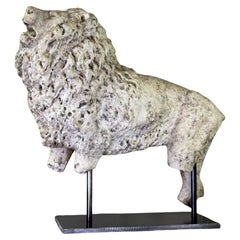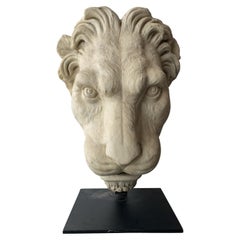Items Similar to After Antoine-Louis Barye Walking Lion Le lion qui marche White Marble Effect
Want more images or videos?
Request additional images or videos from the seller
1 of 5
After Antoine-Louis Barye Walking Lion Le lion qui marche White Marble Effect
$2,077.40
£1,500
€1,764.34
CA$2,826.14
A$3,140.46
CHF 1,645.64
MX$38,512.19
NOK 20,989.13
SEK 19,745.81
DKK 13,168.28
Shipping
Retrieving quote...The 1stDibs Promise:
Authenticity Guarantee,
Money-Back Guarantee,
24-Hour Cancellation
About the Item
Antiquarian Marble -Effect, Walking White Lion
The white lion, roaring and striding forwards.
On a plinth decorated with greek key ornament.
White marble effect resin.
After the antique, in bronze by Antoine-Louis Barye (French, Paris 1795–1875 Paris) Walking Lion (Le lion qui marche) Metropolitan Museum New York No X.420, dimensions 8 3/4 × 4 1/2 × 15 5/8 in. (22.2 × 11.4 × 39.7 cm)
Antoine-Louis Barye cast the first example of Lion qui marche circa 1840 (M. Poletti & A. Richarme, Barye, fig. A 61, p. 187). Although over 100 épreuves of were cast during the sculptor's lifetime, the popularity of the models and proliferation of casts can be credited directly to the foundry Barbedienne, who edited both, numerously and in large quantities, from Barye's death, right up to the Second World War.
Antoine-Louis Barye’s lifelike depictions of wild animals made him the most famous animal sculptor of the nineteenth century, he was known as an ‘animalier’.
Given the lion's associations with power and strength it is befitting that Barye cemented his reputation with his depeiction of ‘Un lion assis’ (‘Seated Lion’), dated 1847 (porte des Lions, Louvre Paris). Bayre had sculpted lions before this date and returned to the subject with many variations after, reworking models of walking lions under the titles ‘Lion qui marche’ and ‘Lion marchant’. Examples of which are recorded in all major museum collections including the Louvre and the MET.
WHITE LIONS
They are as rare as they are beautiful – stunning white lions, whose ancestral home is the Timbavati Region in the Greater Kruger area of South Africa. They are synonymous with the area, with the name Timbavati coming from the ancient XiTsonga language, meaning “the place where star-lions came down”.
White lions have a special place in African folklore and history, with legends telling that they were “children of the Sun God” and were “sent to earth as gifts”. Over 400 years ago, they were said to have been seen during the reign of Queen Numbi. They are considered to be “the most sacred animal on the African continent”, according to the Sepedi and Tsonga communities. They are known as symbols of leadership, pride, and royalty in some African countries, including Kenya and Botswana.
White lions have an ethereal quality to them, with dreamy-looking eyes, and a purity that seems angelic. They appear in various types of popular culture, including books, movies, paintings, and the cartoon character “Kimba the White Lion”, and are used in brand names and advertising.
There are only four white lions in the wild – a male in the Kruger National Park, a young male and related female of Timbavati’s mighty Birmingham Pride, and a newly-spotted cub, also in the Timbavati. That cub is so new that reports of its presence are only just beginning to come from safari guides in the area.
capturedinafricafoundation
- Dimensions:Height: 9.45 in (24 cm)Width: 14.18 in (36 cm)Depth: 5.12 in (13 cm)
- Style:Baroque (In the Style Of)
- Materials and Techniques:
- Place of Origin:
- Period:
- Date of Manufacture:circa 1960
- Condition:Wear consistent with age and use.
- Seller Location:BUNGAY, GB
- Reference Number:1stDibs: LU3867322315302
About the Seller
5.0
Vetted Professional Seller
Every seller passes strict standards for authenticity and reliability
Established in 1985
1stDibs seller since 2018
97 sales on 1stDibs
Typical response time: 9 hours
- ShippingRetrieving quote...Shipping from: BUNGAY, United Kingdom
- Return Policy
Authenticity Guarantee
In the unlikely event there’s an issue with an item’s authenticity, contact us within 1 year for a full refund. DetailsMoney-Back Guarantee
If your item is not as described, is damaged in transit, or does not arrive, contact us within 7 days for a full refund. Details24-Hour Cancellation
You have a 24-hour grace period in which to reconsider your purchase, with no questions asked.Vetted Professional Sellers
Our world-class sellers must adhere to strict standards for service and quality, maintaining the integrity of our listings.Price-Match Guarantee
If you find that a seller listed the same item for a lower price elsewhere, we’ll match it.Trusted Global Delivery
Our best-in-class carrier network provides specialized shipping options worldwide, including custom delivery.More From This Seller
View AllBrunswick Lion Bronze German Model Black Marble, 19th Century
Located in BUNGAY, SUFFOLK
A German bronze model of the medieval Brunswick lion, mounted on a black marble plinth, late-19th century,
The German prince, Henry, Duke of Saxony an...
Category
Antique 1880s German Baroque Revival Animal Sculptures
Materials
Bronze
Lions Pair of Sculpture Marble Italian 13th Century Romanesque
Located in BUNGAY, SUFFOLK
Rare, pair of 13th century, Romanesque, marble, recumbent lions
Recumbent lions were popular in 11th-13th century Italian architecture with pairs ...
Category
Antique 15th Century and Earlier Italian Classical Roman Animal Sculptures
Materials
Marble
Lion Stone Sculpture Architectural Garden Renaissance
Located in BUNGAY, SUFFOLK
This sculpture has taken on a different character over time as it has weathered and the detailing has softened.
Time has given it a pared down, minimalist quality juxtaposing the R...
Category
Antique 16th Century English Renaissance Statues
Materials
Limestone
Statue Stone Plinth Amphictyonis Greek Goddess Wine Friendship Hebe
Located in BUNGAY, SUFFOLK
Charming cast stone statue with fine detailing and relief of a young girl or woman dressed in classical draped chiton, her hair in chignon style secured with a ribbon, with eyes cast...
Category
20th Century Italian Classical Greek Figurative Sculptures
Materials
Cast Stone
Daschund Ceramic Blue & White Vintage Life Size Sculpture Garden
Located in BUNGAY, SUFFOLK
Life-sized, standard Daschund, ceramic sculpture suitable for the home or garden
The blue and white stylised flowerhead and trailing acanthus leaf decoration is unusual and fun, evo...
Category
Vintage 1950s English Mid-Century Modern Animal Sculptures
Materials
Porcelain
Cheetah Stretching Ingwe FoundryS31 Bronze Sculpture Maquette 3/15 Monogram BMR
Located in BUNGAY, SUFFOLK
Bronze study of a stretching cheetah.
RHS under the belly bearing Ingwe Foundry stamp, ‘S31’ or ‘S3I’, Edition 3/15, monogram BMR.
Artist unknown.
I have been unsuccessfully resarching who the artist could be.
The stretching pose of the cheetah is contemplative with a graceful, ease and content expression suggesting its attunement and hierarchy within the landscape and the animal world. Its power is conveyed with a noble quality in the pose, the sleek form and the sinewy musculature.
Beautifully handworked with rich brown patina.
Almost certainly inspired by the work of Dylan Lewis...
Category
21st Century and Contemporary South African Animal Sculptures
Materials
Bronze
You May Also Like
Italian Alabaster Figure of The Medici Lion, 19th Century
Located in London, GB
Italian Alabaster Figure of the Medici Lion
Late 19th century Italian carved alabaster 'Grand Tour' souvenir sculpture, after the antique, "The Medici Lion". Carved alabaster mode...
Category
Antique 19th Century Italian Renaissance Animal Sculptures
Materials
Alabaster
Joseph Frugoni Italian Marble Sculpture of Stalking Lion
Located in New York, NY
Italian marble sculpture of a lion on the hunt by Joseph Frugoni (1897-1923). In very good condition.
Category
Early 20th Century Italian Animal Sculptures
Materials
Marble
Lion, marble sculpture, Venice, after the 18th century
Located in Honnelles, WHT
Lion, marble sculpture, Venice, after the 18th century
Category
Mid-20th Century French Classical Greek Garniture
Materials
Bronze
Roman Carrara Marble Lioness
Located in Los Angeles, CA
Magnificent hand carved Carrara marble sculpture of a lioness head from Rome. Mounted on a metal base. Base 13.75"W x 12.25"D.
Category
Antique 1650s Italian Neoclassical Animal Sculptures
Materials
Carrara Marble, Metal
$49,700
Large Lion Figure Bronze Sculpture
Located in Guaynabo, PR
This is a very well made large lion figure bronze sculpture laying down in a rectangular base. The carving details of the thick mane, paws, tail, nose, and...
Category
20th Century Unknown Neoclassical Revival Animal Sculptures
Materials
Metal
$1,200 Sale Price
20% Off
Vintage French Porcelain Lion
Located in New York, NY
A circa 1950's French white porcelain lion with shield.
Measurements:
Height: 30"
Length: 20"
Depth: 25"
Category
Vintage 1950s French Animal Sculptures
Materials
Porcelain
More Ways To Browse
Marble Lion
Marble Lions
Large Lion Sculpture
Baroque Lion
Lion Plinth
White Lion Sculpture
Lion Marble Sculpture
Barye Bronze
Barye Bronze Sculptures
Baroque Marble Sculpture
Greek Key Marble
French Angel Sculpture
Angel Marble
Antoine Louis Barye
Antique Marble Lion
Antique Lion Painting
Marble Angel Sculpture
African Sculptures Of Female
